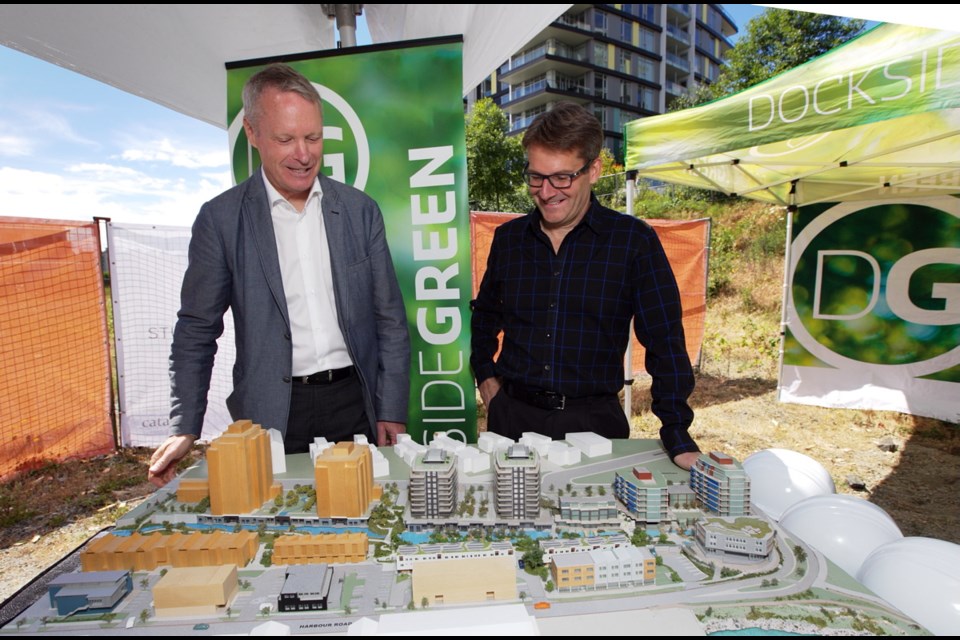For the first time in more than six years, the Dockside Green development site will be alive with the sounds of excavating and building as work begins this week on a 49-unit affordable housing project called Madrona.
It’s been a long wait for Dockside, which started coming out of the ground more than 10 years ago. But Dockside Green president Norm Shearing promises it’s just the tip of the iceberg.
“I’m so excited about getting some action on this site,” said Shearing. The dormancy was due to the market and having to deal with a master plan that didn’t really suit the city, he said. “The development parcels were of a size that was not buildable in the Victoria market. At 250,000 square feet, they were hard to finance and get presales.”
So for the last two years Dockside has been canvassing the community for ideas and working with the city to draft a new master plan that will see another 12 development sites established with smaller buildings ranging from 65,000 square feet to about 120,000 square feet.
“We wanted to take the same density and same heights and redistribute that through smaller buildings, the size that are more reflective of the market,” he said.
He expects that will be more palatable to builders and the market, meaning the rest of Dockside Green will be built faster than initial phases.
Shearing said he hopes to take the master plan to the City of Victoria this summer and see the first new commercial buildings start to materialize next spring.
The new plan, which will be built with Dockside’s LEED (leadership in energy and environmental design) Platinum community program in mind, will include commercial and residential buildings, more park area than the first version, a kids’ play area, dog park, a park to replace a previously planned traffic circle and a retail centre with grocery store.
The new phase of development started Tuesday with Madrona at Dockside Green, which broke ground along Harbour Road. The $9-million project will see two three-storey buildings with rental housing for working people and families available by next summer.
The project is being directed by Vancouver’s Catalyst Community Developments Society, a not-for-profit developer of workforce affordable housing.
The project will include everything from studio apartments to four-bedroom townhomes, each of which comes with a bike, B.C. Transit pass subsidy and access to the Modo car share program.
The homes will be rented to households with annual incomes ranging from $28,000 to $65,000 that are granted through an application process.
“This is exactly what we need,” said Victoria Mayor Lisa Helps. “This is not about homelessness, it’s about workforce affordable housing for families.”
Catalyst president Robert Brown said often in markets like Victoria where there is very little rental available, it’s working people who get hit hard.
“Often it’s people in the middle who as rents escalate rapidly are the people who get squeezed. There are a large number of working people in Victoria that pay more than 50 per cent of their wages on rent,” he said.
Brown said Catalyst charges rent that is no more than 30 per cent of household income.
Madrona is made possible by a financing model that includes about $3 million that was set aside for affordable housing by Dockside Green years ago and held by the City of Victoria as well as private investment from foundations and investors willing to take less than market return because it’s for affordable housing.
The two buildings will also be part of the overall community LEED program and will tie into Dockside’s heating systems and wastewater treatment.
“Hopefully we own this building in perpetuity, so it’s important they are affordable to operate,” said Brown. “We have focused our money on things that will use less water and energy, therefore they have less environmental impact and are more affordable to operate.”



